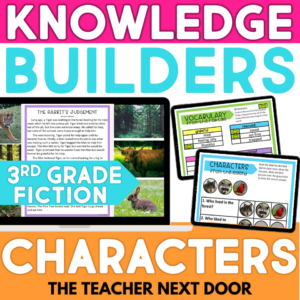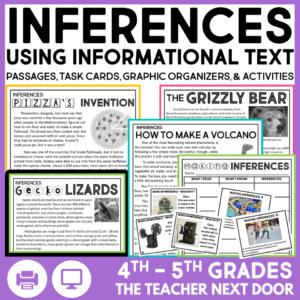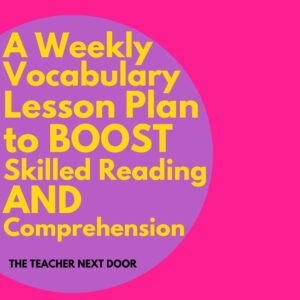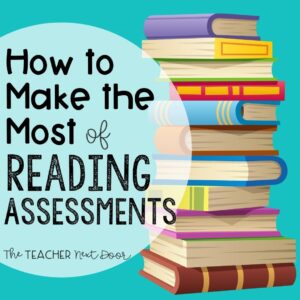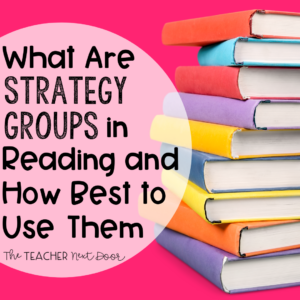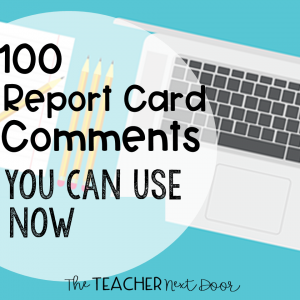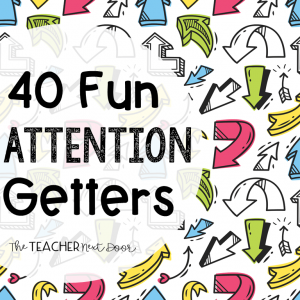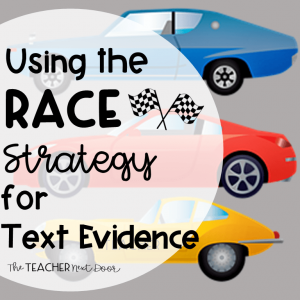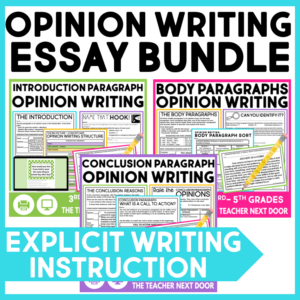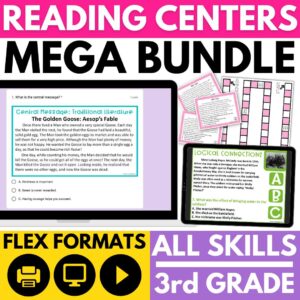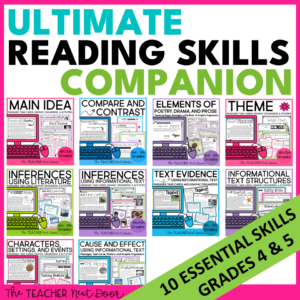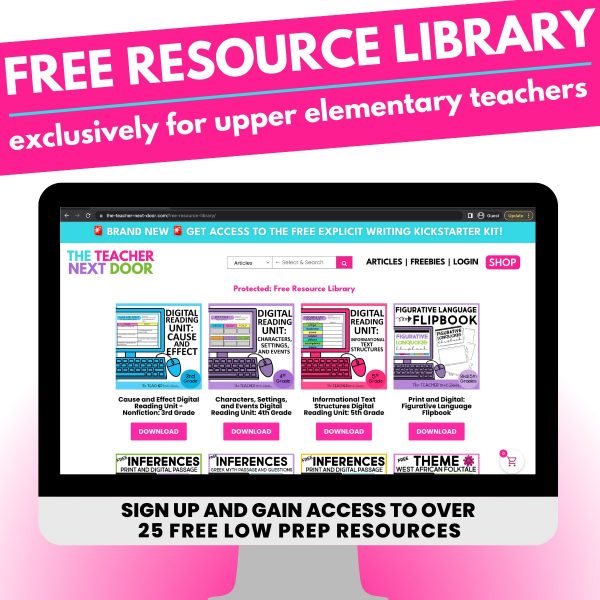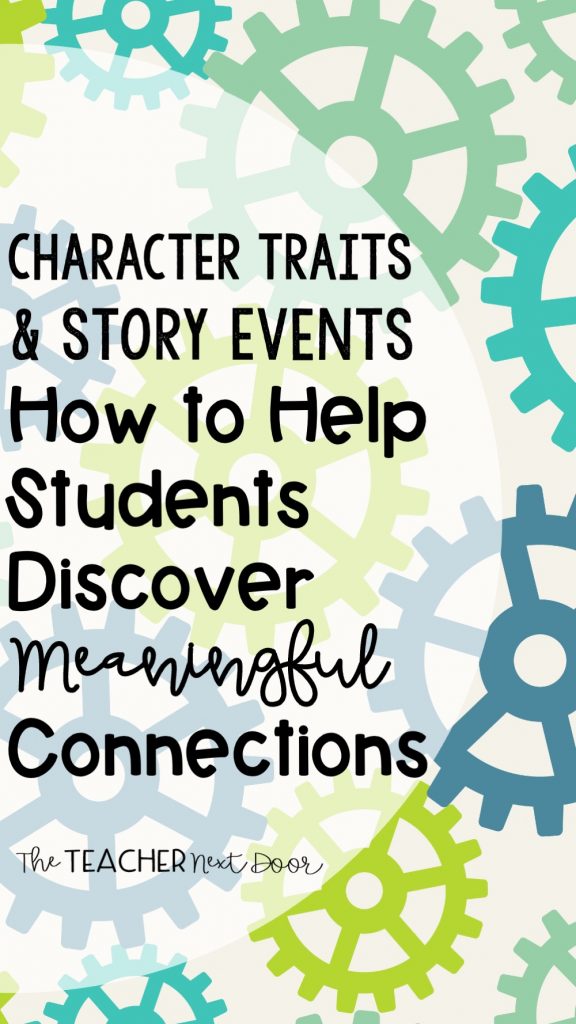
You’ve been working with your students on understanding character traits for a while now. They are practically experts at:
- identifying character traits
- describing characters
- finding text evidence to support their findings.
So…you’re done, right? Time to move on to the next skill?
Sorry, but nope! There is another important way that students need to use character traits, and this one is a little more complex: determining how the events of the story are impacted by the traits of the characters.
Students must be able to explain not just what a character is like, what they do and say, and what motivates them, but they also must be able to make a connection between the character’s traits and the events that take place in the story.
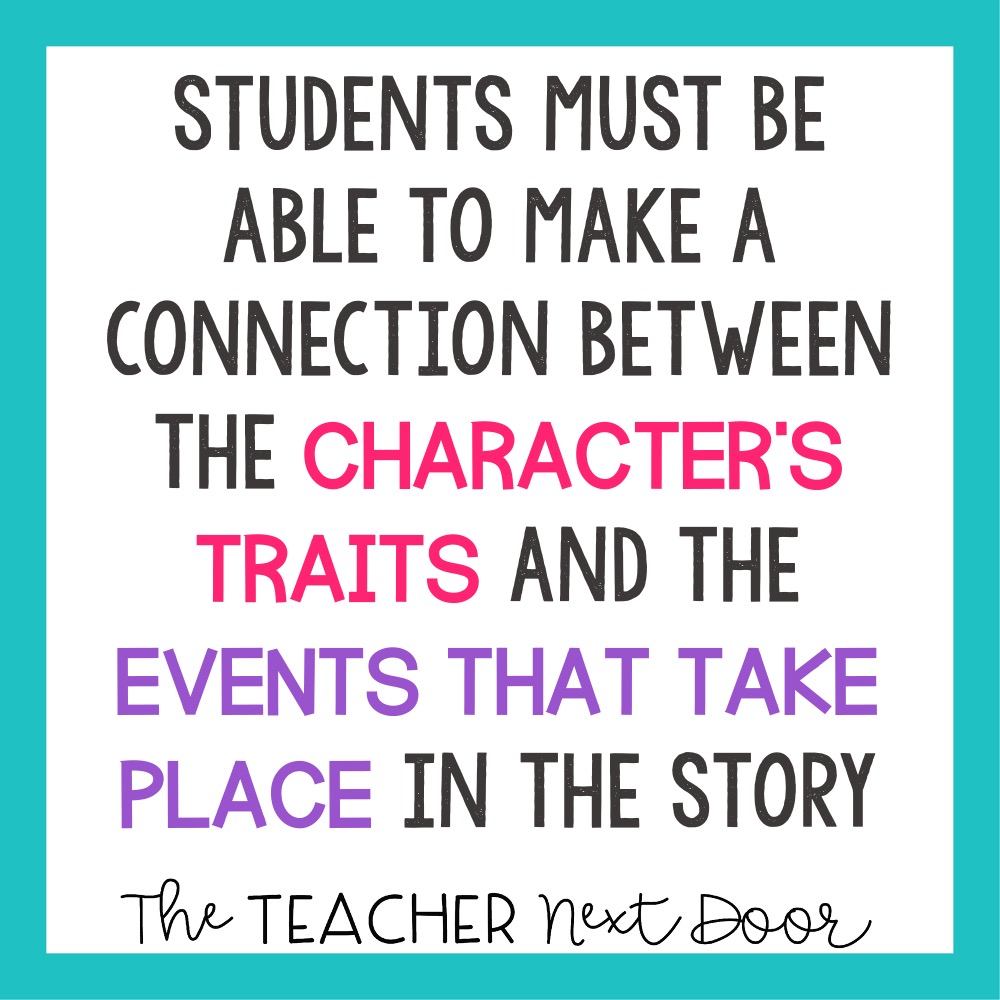
This might sound a little tricky, but don’t worry! With plenty of practice, students CAN master this skill. Read on to find out how I navigate teaching students to connect character traits with the events of the story.
Getting Started
Identifying character traits is not a new skill for 3rd graders- they’ve been doing it in one form or another since 1st grade. Determining how those character traits impact the events of the story is new, however, and it’s going to require direct instruction and practice.
When getting started with this skill, I recommend working together as a whole class, and it’s best to start with a shorter passage. Each student should get their own copy. Depending on your class, decide if it’s best to read it together as a whole class, independently, or in pairs.
After everyone has read the story, discuss the traits of the main character. This is a great time to pull out some different colored highlighters or markers. Students can look for text evidence that supports the character traits and highlight it in one specific color… Kids love a good excuse to use highlighters, right?!
Once students have identified some traits, you should introduce the next part of the skill. In order to scaffold their learning, I suggest that YOU identify an event in the story and ask students to think about how this character’s traits made an impact that caused this event to take place.
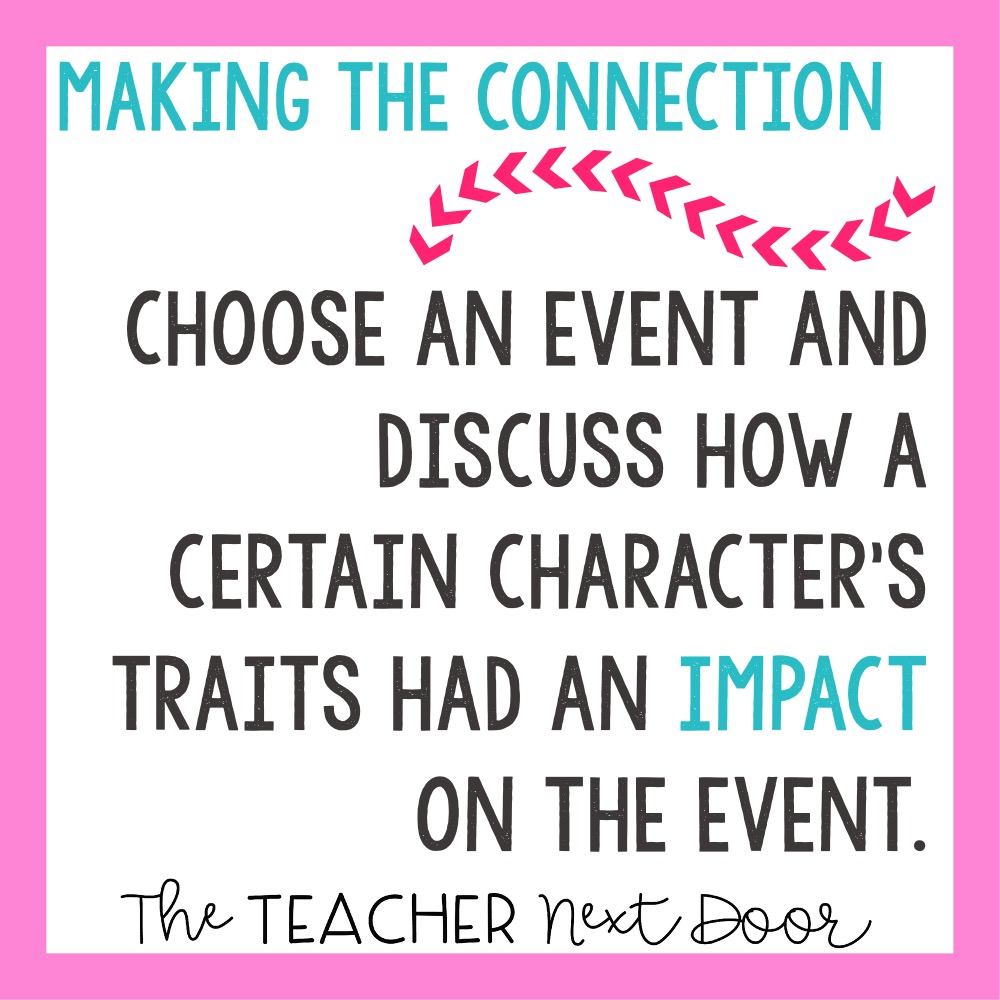
After practicing with this guidance, students will soon be ready to make the jump to making these connections on their own.
Going Deeper
The easiest connection for students to make is connecting a character’s words and actions to events that happen later on. It’s perfectly reasonable to start out with this simple cause and effect relationship, but you will eventually want to move students to a deeper level of analysis when they are ready.
To explain how to do this, let’s use a familiar example, “Goldilocks and the Three Bears.”
Students can easily see that Goldilocks entered the bear’s home without permission, and this caused them to angrily chase her away.
A more in-depth question would be, “What character traits does Goldilocks have that led her to enter the Bear’s house?” Kids may decide that she is curious, brave, rude, careless…different kids will interpret it in different ways.
The next step is to get students thinking more deeply by asking, “What if Goldilocks wasn’t so curious? In what ways would that change the story?” Answering these questions will require students to make some connections between what the character is like, what the character does and says, and what happens as a result.
Another way to get kids thinking is to give them an overly simplified example and ask them to evaluate it. “Goldilocks is very curious, so the bears chased her out of their house.” Is this accurate? How could you explain this better or make the connection more clear?
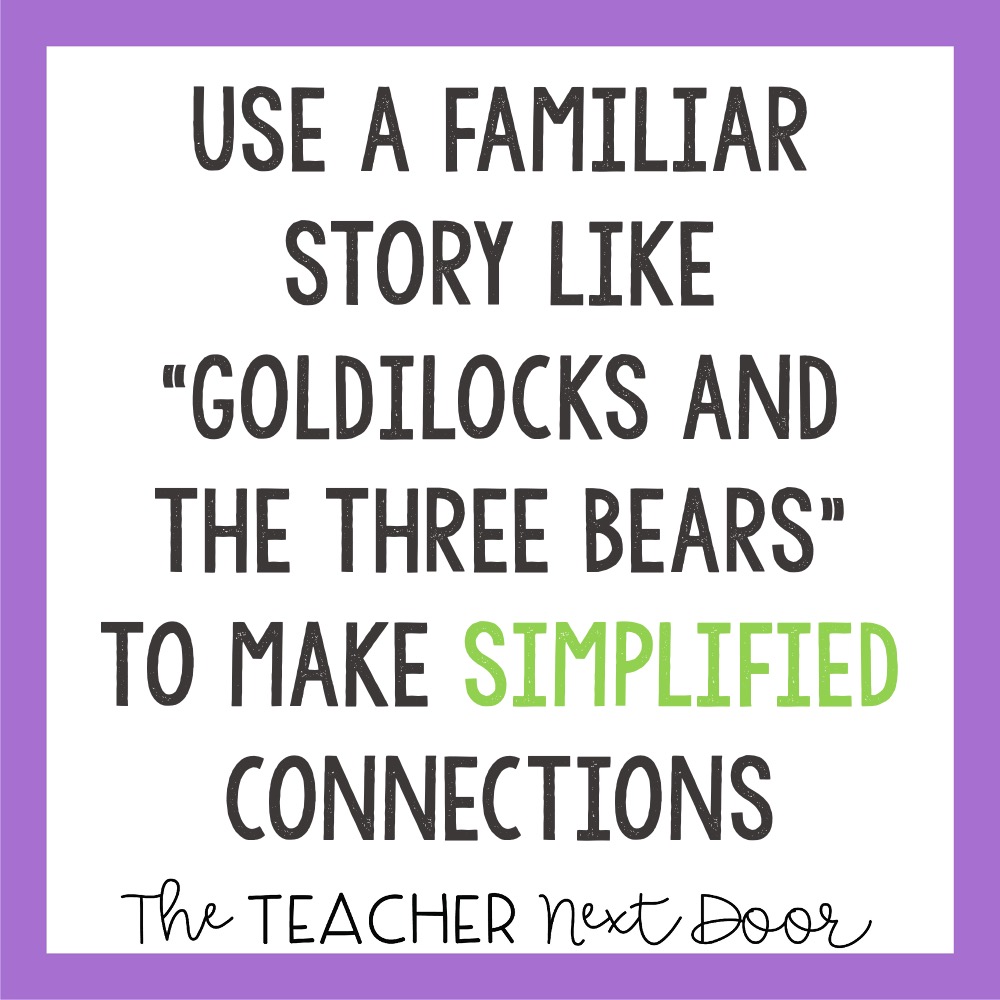
Struggling Readers
Struggling readers may have a difficult time making the connection between the characters’s traits and the events of the story. If this is the case, there are a few ways that you can scaffold instruction to make it more accessible.
First, work with these students in a small group if you can – maybe during reading workshop, while the other students are engaged in individual practice, or during centers. Working with a smaller group will allow you to ask kids lots of questions and clear up any misconceptions…
Choose a familiar story to work with. This way, they will be able to use what they already know about the characters and events. The only new thing is making those connections.
You will also want to be sure to scaffold instruction, providing kiddos with a ton of support at first, and then slowly asking them to do more and more on their own.
In the beginning, you might provide a character trait and event, and guide the students to find the connection between the two. When students can do this without struggling, give them an event, and ask them to connect it to a trait the character has.
Assessment
In order to assess this standard, you have to be thoughtful about the types of questions you ask. This isn’t a skill that can be easily assessed with multiple-choice questions. Instead, you should give kids open-ended questions and ask them to explain their thinking as much as possible.
Keep an open mind while grading. You aren’t looking for a definitive right or wrong answer, but rather that students can connect a character’s traits to events in the story, and support it with text evidence. Not every child will make these connections in the same way, and that’s perfectly fine!
Resources
If you are looking for some resources that will provide practice on this skill, check out Characters Digital Reading for Google Slides. This digital resource includes texts that are a little bit on the longer side, and require students to do some deeper thinking about the characters. These passages make for great multi-day units where you can really dive deep into text analysis and hit several reading strategies along the way.
This FREE resource, Character Traits Game Print and Digital provides shorter, more targeted practice for students on determining character traits. It would be a good one to use with struggling readers, and it comes with both print and digital versions!
Both of these activities are great for homework, independent work, or even whole-class practice. There are straightforward questions for practice (Who is the character that did xyz…?), and also questions that require students to go deeper and to find evidence in the text to support their answers. The perfect mix to relinquish the responsibility of this task to your students, little by little!
Want to read more? Check out these helpful blogs!
Teaching Character Traits in Reading
High-Interest Low Readability Books for Upper Elementary
Using Read Alouds in the Upper Elementary Classroom


